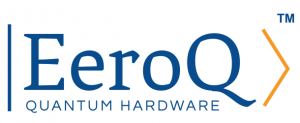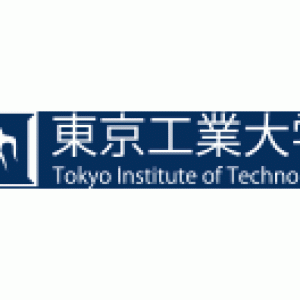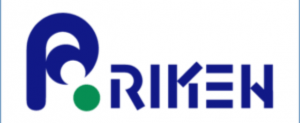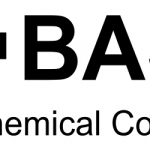Quantum News Briefs August 24: SandboxAQ teams With ‘Hiring Our Heroes’ to place members of the military community in quantum tech careers; EeroQ announces $7.25 million seed round; Diamond quantum sensor measures currents in the heart at millimeter resolution & MORE

Quantum News Briefs begins with announcement that SandboxAQ has teamed with the ‘Hiring Our Heroes’ organization to place members of the military community in quantum tech career followed by details on EeroQ’s $7.25 Million Seed Round. Next is update on a successful demonstration of a diamond quantum sensor measures currents in the heart at millimeter resolution & MORE
*****
SandboxAQ Teams With Hiring Our Heroes Organization to Place Members of the Military Community in Quantum Tech Careers

SandboxAQ has announced a partnership with the U.S. Chamber of Commerce Foundation’s Hiring Our Heroes (HOH), an organization that connects the military community – e.g., transitioning service members, military spouses, and veterans – with American businesses to create economic opportunity and a strong and diversified workforce. Quantum Tech Briefs summarizes the announcement below.
“The quantum technology ecosystem is currently experiencing a dramatic shortage of highly skilled talent it needs to sustain its rapid growth. This creates incredible opportunities for military community members to get involved with pioneering companies that are using this technology to create groundbreaking products,” said Suzannah Radack, Vice President of People Operations at SandboxAQ. “We believe the military community has a lot to offer the quantum industry, and together with Hiring Our Heroes we hope to give them a bright new career path in this exciting field.”
Through HOH, SandboxAQ is tapping into a growing pool of talented and dedicated workers looking to apply their advanced degrees and military experience in fields such as cryptography, AI, advanced mathematics, program management, natural and applied science. Original article here.
*****
EeroQ Announces $7.25 Million Seed Round
 EeroQ, which announced a $7.25 million seed funding round August 23, is betting on mass-produced CMOS chips that use electrons floating on liquid helium to power the core of its quantum processors. Frederic Lardinois of TechCrunch covered the funding and discussed the technology; Quantum News Briefs summarizes below.
EeroQ, which announced a $7.25 million seed funding round August 23, is betting on mass-produced CMOS chips that use electrons floating on liquid helium to power the core of its quantum processors. Frederic Lardinois of TechCrunch covered the funding and discussed the technology; Quantum News Briefs summarizes below.
The advantage of this, the EeroQ team argues, is that it allows for very long coherence times (close to 10 seconds), fast gates and the ability to quickly scale the technology to thousands of qubits (though it isn’t quite there yet). The company was founded in 2017 and the team spent the last few years working on the fundamental science behind these designs. The company recently added Princeton Electrical & Computer Engineering Professor Steve Lyon as CTO and completed its headquarter and lab in Chicago.
The company’s seed round was led by B Capital’s Ascent Fund, with participation from V Capital, Alumni Ventures, Unbound Ventures, Calibrate Ventures and Red Cedar Ventures. B Capital’s chair Howard Morgan and its senior principal Morgan Polotan will join the company’s board.
“We’re the only company that is pursuing electrons and helium — and electrons and helium, it’s an almost identical system to silicon spin qubits. [ … ] The only difference is that what we’re trying to do is, instead of having the single electron spin be embedded inside this silicon — which has all types of possible defects — [ours] actually floats on top of a layer of liquid helium. The really cool thing here, just from a pure science effective, is that the electron is attracted to its own image and therefore it’s trapped naturally,” EeroQ CEO Nick Farina explained.
“I think there are multiple valid ways to build a quantum computer,” Farina said. “And I think that in the NISQ era, over the next five years by the middle of the decade, you’re going to see multiple success stories of creating real customer value using different types of qubits.
*****
Diamond Quantum Sensor Measures Currents in the Heart at Millimeter Resolution
 A team of Japanese scientists at Tokyo Institute of Technology developed a novel setup using a quantum diamond sensor to perform magnetocardiography (MCG) which is a promising alternative approach to measuring heart currents indirectly. The technique involves sensing minute changes in the magnetic field near the heart caused by cardiac currents. SciTechDaily reported on the successful effort; Quantum News Briefs summarizes.
A team of Japanese scientists at Tokyo Institute of Technology developed a novel setup using a quantum diamond sensor to perform magnetocardiography (MCG) which is a promising alternative approach to measuring heart currents indirectly. The technique involves sensing minute changes in the magnetic field near the heart caused by cardiac currents. SciTechDaily reported on the successful effort; Quantum News Briefs summarizes.
Their approach is based on a diamond quantum sensor comprising nitrogen vacancies, which act as special magnetic “centers” that are sensitive to the weak magnetic fields produced by heart currents. The researchers were led by Associate Professor Takayuki Iwasaki of Tokyo Institute of Technology (Tokyo Tech), Japan.
The sensor is also fluorescent, which means that it easily absorbs light at specific frequencies and then re-emits them at different frequencies. Most importantly, the intensity of the light re-emitted at the nitrogen vacancies changes depending on the intensity and direction of the external magnetic field.
unlike other well-established MCG sensors that require cryogenic temperatures, the diamond sensor could operate at room temperature. This enabled the researchers to position their sensor extremely close to the heart tissue, which amplified the measured signals.
The researchers created an MCG setup using a 532 nm (green) laser to excite the diamond sensor and a photodiode to capture the re-emitted photons (light particles). They also developed mathematical models to accurately map these captured photons with the corresponding magnetic fields and, in turn, with the cardiac currents responsible for them.
*****
Fujitsu, Riken to Offer 1st Japan-Made Quantum Computer

Japan’s Fujitsu and Riken research institute plan to jointly offer quantum computers to companies in the fiscal year starting April 2023, according to Akira Oikawa and Ami Yamada in the August 22 NikkeiAsia. Quantum News Briefs summarizes below.
Fujitsu will become the first domestic company to commercialize such a machine in Japan. Fujitsu established a base in Wako city in Saitama prefecture to jointly develop quantum computers with government-backed Riken in April last year, with the participation of about 20 researchers. Like Google and IBM, Fujitsu will adopt a method of computing with a “superconductive” circuit that is cooled to extremely low temperatures to eliminate electrical resistance.
Fujitsu’s computer will have 64 qubits, more than the 53 qubits in Google’s 2019 machine and second only to IBM’s 127 qubits developed in 2021. Fujitsu says it hopes to produce a machine that has more than 1,000 qubits after April 2026.
The company says the machines will be available to companies for use in research within the next fiscal year which starts in April.
*****
Sandra K. Helsel, Ph.D. has been researching and reporting on frontier technologies since 1990. She has her Ph.D. from the University of Arizona.



















